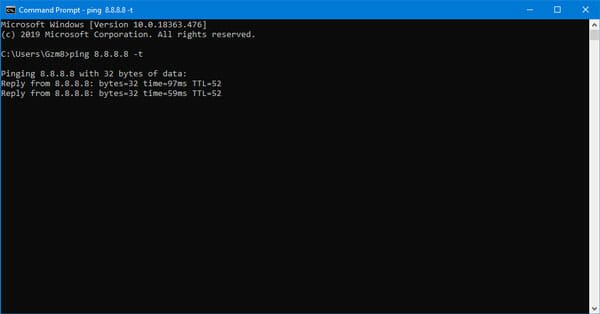Measure User Experience With Pingdom’s Real User Monitoring Tool – A Personal Experience
I am a big fan of Pingdom tools, it provides detailed insights on how fast or slow your websites loads. I have used different tools to monitor and measure the loading time of websites but off late, I have sticked with Pingdom. I was using Google webmaster tools and Google Analytics to have detailed data on the loading time of different pages on my site but Google has recently stopped showing loading time stats in Google webmaster tools. Hence, the swith back to Pingdom.
Pingdom has recently added a new feature to their kitty – Real user monitoring.
Abbreviated as RUM, Pingdom’s real user monitoring tool gives some interesting and valuable insights on how users react in your website or application. In this post, I am going to explain what real user monitrong is, how it is different from other site analytics tools and why or when you should use it on your website.
What is Real User Monitoring?
Real user monitoring is a way to monitor and log user interactions on your website or web appplication. The goal of real user monitoring is to find whether your users are having difficulties using your website, application or product. Let’s illustrate this with a brief example.
Let’s say you have a small eCommerce store which gets 5000 hits every day. Your store is not doing good in terms of sales and you want to know why users are spending less time on your website.
Here are some important questions to ask:
- What are the pages on your website where users are spending the least amount of time?
- What are the pages where users are finding it difficult to get through? Multiple clicks, repeat loads?
- Which pages on your website are slowest?
- Which pages are most frustrating?
- Which pages do not serve the goal?
- What is the load time of your website by country?
- Which geographic locations have the highest and least turn around times?
and so on and so forth.
In brief, RUM (real user monitoring) is a monitoring technology, the goal is to constantly monitor real users on your website and see if your website is meeting their demands or not. Companies or organizations use RUM to test changes prior to deployment, to check to see if a minor change causes huge user dis-ssatisfaction or not. If you’re into UX design, user experience and want to give your users what they are looking for, you should do user monitoring tests frequently.
Are your users satisfied, tolerating or frustrated? Pingdom’s Real user monitoring tools tells you
Go to Pingdom’s RUM page and signup for an account (it’s free!). Create a new profile for your website, grab the embed code and embed it in your website’s HTML source. You’re all set.
Wait for a few days or a week and you should see all real user monitoring stats in your Pingdom RUM account. Here is how it looks like:

See how real users used your website or app in differnet browsers

I do not rely solely on Google Analytics for measuring the loading time of my site’s pages. I have seen aberrations in Google Analytics reports and I was looking for a tool which would provide some insights on the loading time across different browsers.
Pingdom’s RUM provides detailed reports on the browsers used by your users and which browser loads your website faster. In my case, I found that Safari was fastest while Internet explorer was the slowest. Surprisingly, my website loaded faster in Firefox and not in Google Chrome.
I can filter this report per page and quickly cross check which pages are loading slowly in a specific browser. Then I know exactly what needs to be done and I can go ahead and fix it. Neat!
Use The User Experience Meter
Switch to the “Experience” tab and you get a quick glimpse on the overall user experience on your website.

The “Experience” page helps you find how many users are in the “satisfied” zone, how many are in the “tolerating” zone and how many users are frustrated with your website or application. If the number of “frustrating” users is above 20%, there is something wrong in your website and you’ve got to fix it as soon as possible.
How I have used Pingdom’s Real user monitoring tool so far
From the surface, the tool looks very basic but if you take action, you can greatly improve user experience on your website.
These days, I work at a tech startup, my role involves improving the UX and overall user experience. I work for a global product which is used by B2B clients and customers, so it is imperative that they get the best possible user experience and are not annoyed when they use the app.
By using Pingdom’s real user monitoring tool, I was able to pinpoint the following issues on our web application:
- Customers are mostly annoyed by slow logins.
- Repititive clicks are a huge, huge distraction. You should reduce the number of clicks and keep it to the bare minimum.
- Overlay windows and iFrames create confusion.
- If you don’t pre-fetch or cache different pages of your app, you’re doing it wrong.
- There is no best browser. There are no good or best practices, you just can’t expect your customers to use Safari or Google Chrome. If they are not using the best browser, you have to fix things yourself. If that means writing and fixing repititive bugs for Internet Explorer alone, so be it.
- Mobile UI is not always faster.
- The data on my Pingdom RUM account says that Android users are more frustrated than iPhone users. Again, it greatly depends on how the mobile app is developed, the geographic location of the user, network and other things but if your entire user base is on Android and your application takes 16 seconds to load, there is something terribly wrong.
I will be writing some more interesting things about user experience in my upcoming post. Do give Pingdom’s tool a spin and let us know your thoughts in the comments below.


